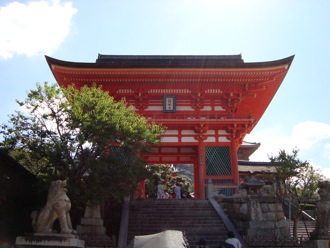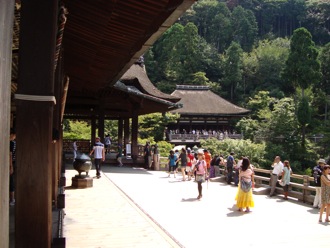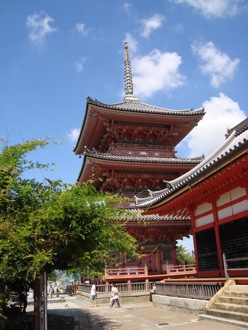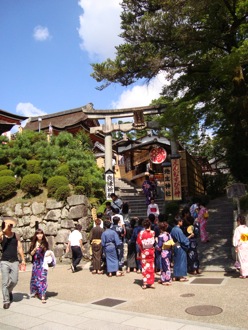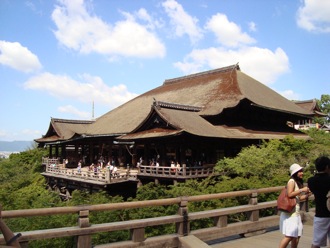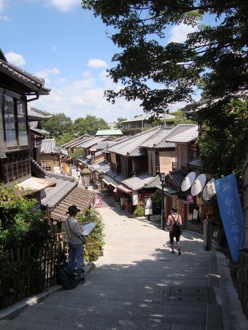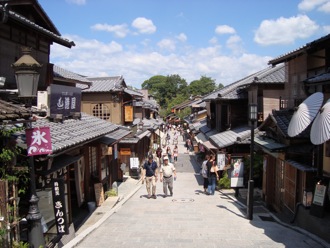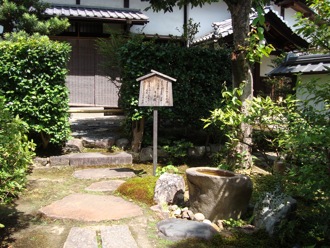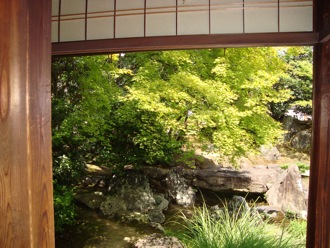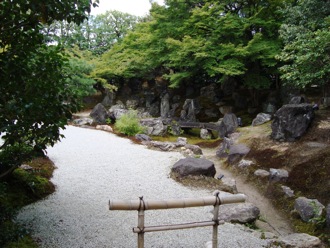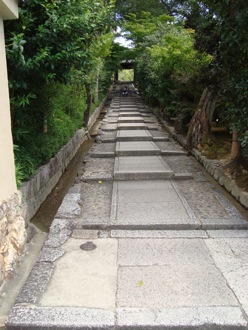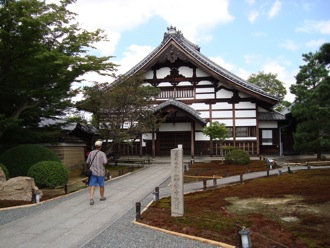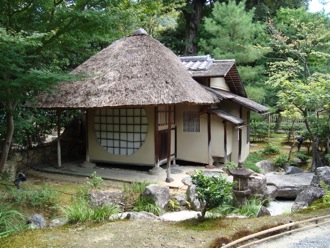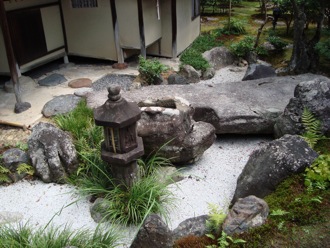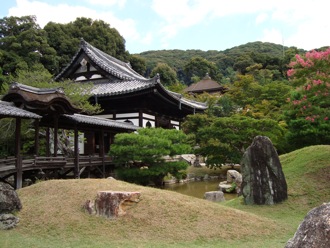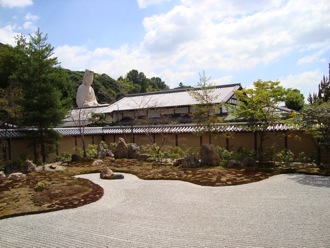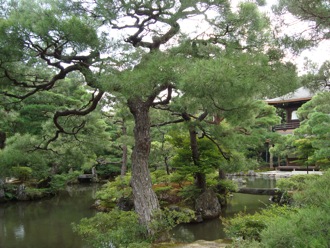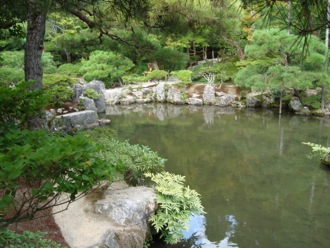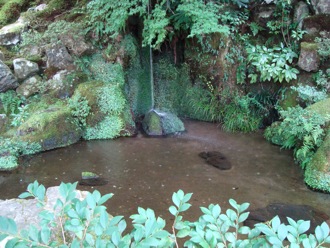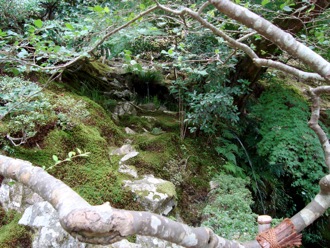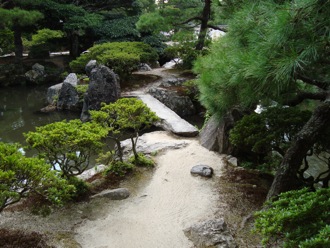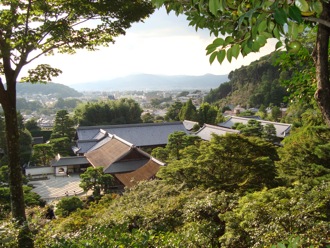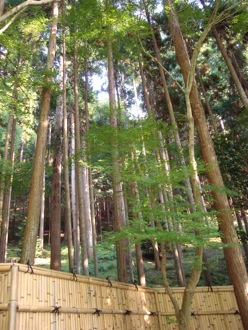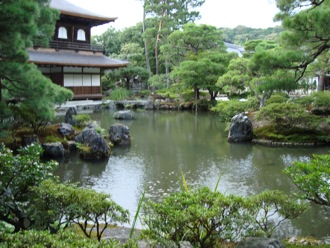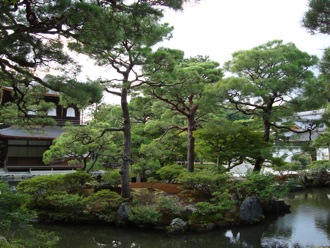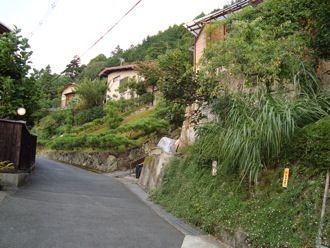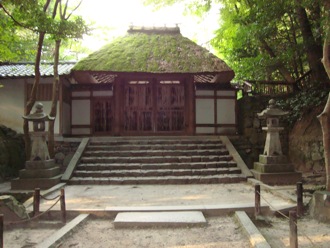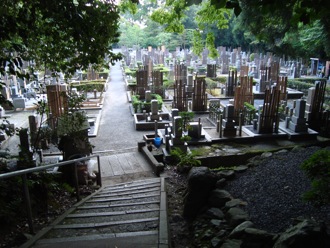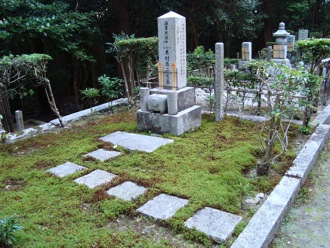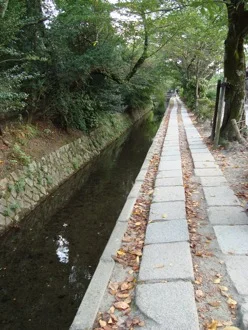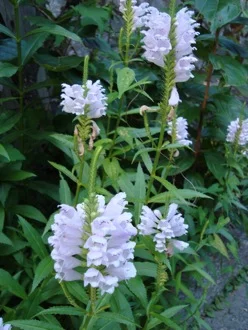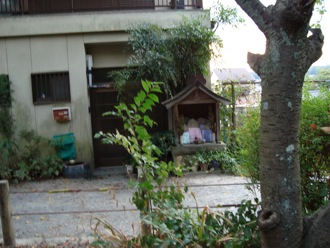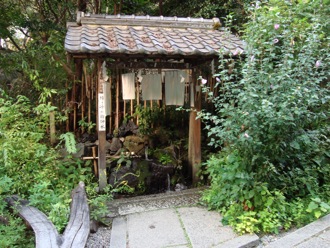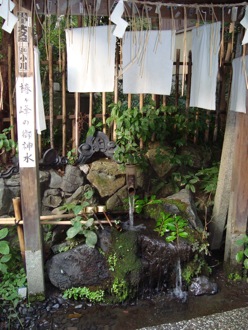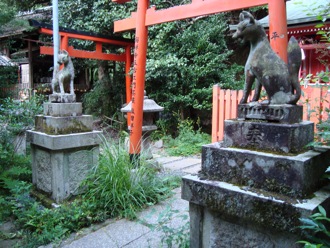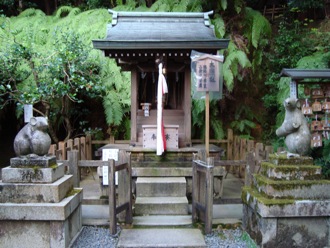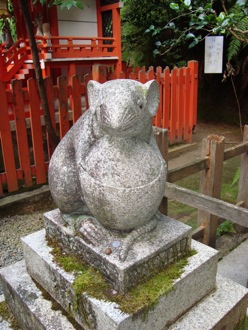Took the Shinkansen (bullet train) from Tokyo to Kyoto. Wandered around Kyoto in the evening.
9/4/10 - First Temples and Gardens; Kyoto Handicrafts Center
Kyoto was hot and humid. But I was excited to explore traditional Japanese culture! I decided to start by visiting temples and shrines clustered at the southern end of the Higashiyama hills, which form the eastern border of Kyoto.
I started with the Kiyomizudera Temple. This is a large complex with huge numbers of visitors. I found it colorful and intellectually interesting, but did not feel emotionally drawn to it.
Next I headed north on two charming small streets that showed what Kyoto must have been like hundreds of years ago, Sannenzaka and Ninenzaka.
Then I stumbled upon Entokuin Temple – I looked through the entrance to the courtyard and saw an enticing garden beyond. Although I could not find it in my guidebook, I was intrigued and decided to explore. This temple had two gardens, and I LOVED both of them. I had such a powerful reaction – a deep feeling of peace and beauty. This made me realize that gardens were what I responded to, more so than temples and shrines.
Across from Entokuin was Kodaiji Temple, which also had a lovely garden.
After visiting all these sites, I was tired, and made my way back to the hotel.
Later in the day, I visited the Kyoto Handicraft Center. I enjoyed looking at many crafts, and found some presents for relatives. Also dropped by a used English-language bookstore, where I picked up a couple of Agatha Christie novels to keep me going.
9/5/10 - Ginkakuji, Philosopher’s Walk, Otoyo-jinja
I rested in the morning, worn out from all the activity… plus I needed to attend to some email correspondence.
In the afternoon, I enjoyed some lovely sightseeing. Today’s target garden was that of Ginkakuji, also known as the Silver Pavilion, a Zen temple located at the northern end of the Higashiyama hills. The garden was beautiful and satisfying to my love of gardens.
From Ginkakuji, I walked south through the Higashiyama hills, along quiet, charming, narrow residential streets. Although there had been many visitors at Ginkakuji, I was almost alone once I left the temple grounds.
Pretty soon I came to Honen-ji, a quiet temple with a large cemetery. There were hardly any tourists.
After that, I dropped down the mountain a bit and continued walking south on the Philosopher’s Walk, a small street along a tiny canal. It was still amazingly peaceful –few people were out, and I was surrounded by the music of birds and cicadas. I saw a flowering plant (below) that looked exactly like Obedient Plant, a Texas native! Globalization???
Eventually I ended up at the Otoyo-jinja Shrine. This site is not listed on most guidebooks, so it was a surprise, and completely delightful!
At the entry to the site, I rinsed my hands at the charming fountain, as I had learned to do.
The site included small shrines dedicated to squirrels, dogs, and monkeys. I rang the bell and clapped at the dog shrine, thinking of Mingo.
The gardening aesthetic was much more wild and natural than, say, Ginkakuji. I liked both styles.
I had been feeling tired when I arrived at Otoyo-jinja, but left feeling much refreshed.
For dinner, I went to a small restaurant I had seen on a quiet street near Ginkakuji. The seating was Japanese style, on tatami mats, and the large windows looked onto a lovely garden. This restaurant specialized in yudofu. This is tofu simmered in a plain broth, served with condiments. Until I visited Japan, I thought tofu was a boring food. But I have come to appreciate that it can also be a gourmet dish! What I had at this restaurant (and others) was completely different from the dish served in America. The flavor and texture were delicate and delicious. When I expressed my appreciation to the waitress, she said that the chef prepared fresh tofu every morning. The meal also included appetizers, tempura, and rice and pickles.
